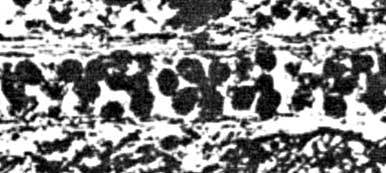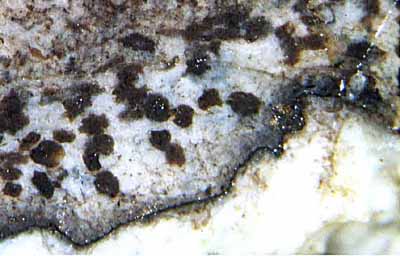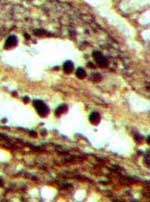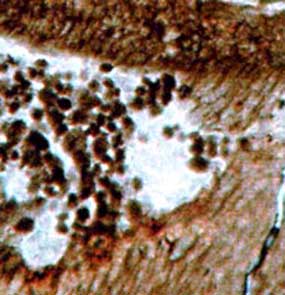
| deutsche Version |
| R.W.
BAXENDALE (1979) K. GOTH, V. WILDE (1992) C.C. LABANDEIRA, T.L. PHILLIPS, R.A. NORTON (1997) R. RÍSSLER (2000) R. RÍSSLER (2001) R. NOLL, V. WILDE (2002) D.W. KELLOG, E.L. TAYLOR (2004) ZHUO FENG, JUN WANG, LU-YUN LIU (2010) M. BARTHEL, M. KRINGS, R. RÍ▀LER (2010) Zhuo Feng, Jun Wang, Lu-Yun Liu, R. R÷▀ler (2012) C. Strullu-Derrien, S. McLoughlin, M. Philippe, A. M°rk, D.G. Strullu (2012) N.A. Jud, G.W. Rothwell, R.A. Stockey (2010) |
(1) (1) (2) (3) (1) (2) (1) (2) (1) (2) (3) (4) (3) (1) (2) (1) (3) (4) (1) (2) (3) (4) (1) (2) (3) (1) (2) (3) (4) (1) (2) |
[1] [2] [3] [4] [5] [6] [7] [8] [9] [10] [11] [12] |
 Fig.1:
Alleged "small coprolites filling the mesophyll cavity" of a
Cordaites
leaf from Pennsylvanian coal ball, here interpreted differently. Detail
from [1], Fig.9; clot size 30-40Ám.
Fig.1:
Alleged "small coprolites filling the mesophyll cavity" of a
Cordaites
leaf from Pennsylvanian coal ball, here interpreted differently. Detail
from [1], Fig.9; clot size 30-40Ám.



 |
 7 7 |
|
|
|
|